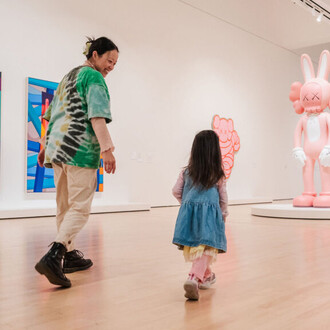Nancy Toomey Fine Art is pleased to announce an exhibition of works by Monica Lundy titled Asylumscapes: Studies on Sites of Memory, on view from March 29 to May 13, 2023.
What is the meaning of the word scape? It is the view or scene of something. Asylumscapes therefore describes a precise scenario, that of the place of the asylum as seen by the artist herself. The place in question is the former asylum in Rome, Santa Maria della Pietà, a place traversed by Monica Lundy in different directions. In the past, the artist has made works starting from archival images, site visits, and later she made burned drawings of objects belonging to that place. For this exhibition, however, Lundy, not at all tired of looking at the place once again to probe the pulse of memory to its depths, embraces it with paint, as if she were treating a landscape. Yes, a landscape, precisely one of the topos of painting.
Again returning to the suffix scape therefore reminds us of a wide look into space. Metaphorically, Lundy’s means a wide look into history and memory: through the places that still have a reminder of past nightmares, hidden events that, faintly, allow themselves to be described through visible traces and signs.
Glimpses of abandoned interiors, characterized by empty horrors of cardboard boxes or by the loneliness of a chair or a radiator, as well as the view of a pavilion among a grove of trees and the portrait of a ruined building: these are some of the subjects that Lundy paints as a statement. “These are places of memory, the landscape of memory,” says Lundy. Beautiful or insignificant, bleak or fascinating, they represent a thousand portraits of as many human beings. They are studies, images where the artist’s eye seeks new units to measure what perhaps cannot be measured: memory and especially everything that escapes from memory.
Thus, liquid porcelain on board or charcoal on linen are the mediums Lundy prefers for this series of works as tools to crystallize what is otherwise elusive. The difference in technique, however, is brought to the same formal regime by a single gesture unique to all the works in the series, namely the frame. The frame is not simply a frame, but an integral part of the work. Handcrafted with traditional Roman techniques, it is conceived by the artist as a “stage” in which the images are exhibited once and for all, as if to be fixed forever in memory, in a kind of monitor sculpted to project the same image indefinitely.
(Text by Giuliana Benassi, contemporary art curator and professor at the Accademia di Belle Arti di Roma)
Italian-American artist Monica Lundy was born in Portland, Oregon (1974) and raised between the United States and Saudi Arabia. She holds a BFA in sculpture from the School of the Art Institute of Chicago and an MFA in painting from Mills College, where she worked closely with the Chinese-American artist Hung Liu (1948-2021).
Lundy’s lavish mixed-media paintings and installations are based on extensive research conducted in archives, museums and libraries around the world. Her subjects include historically marginalized populations whose struggles are long forgotten. By unearthing the narratives of these people and places, she gives new voice to their plights, that we today might learn from the trials they endured. Her painting technique incorporates non-traditional media such as clay, rusted metal, liquid porcelain, and burned paper, catching viewers off-guard with a sensibility is simultaneously gritty and luxuriant. Lundy’s site-specific installations have been mounted in unusual venues such as Alcatraz Island, San Francisco Mint, Golden Gate State Park in San Francisco and Santa Maria della Pietà in Rome (a decommissioned “insane asylum”). She is the subject of a recently published monograph featuring texts by four distinguished authors, with a lead essay by Dorothy Moss, curator of painting and sculpture at the National Portrait Gallery (Smithsonian Institution, Washington, D.C.). Lundy currently lives and works in Rome and Friuli Venezia Giulia, Italy.
















